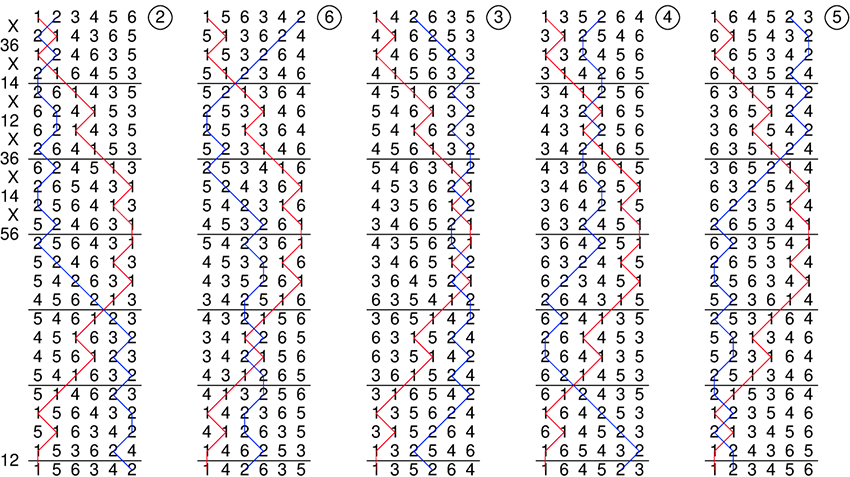If you listen closely to the jubilant ringing of peal bells, you might be able to discern a pattern. Try to pick out one individual bell by listening for its distinctive tone. Next, observe when that bell rings in relation to those around it. Does it ring first in the sequence, then second in the following sequence? You’re well on your way to determining which method is being rung.
A set of change ringing bells (called a “ring” of bells) commonly comprises 5, 6, 8, 10 or 12 bells. Each is tuned to a specific tone and each is rung by a single person pulling a rope below the bell. If you think of the bells being numbered, the simplest sequence to ring 10 bells would be 1, 2, 3, 4, 5, 6, 7, 8, 9, 10. By moving bells up and down the ringing order by calling out changes, a new sequence is created. In change ringing, this defined sequence is called a method.
In our 10-bell example above, the bells could instead be rung in this order: 1, 3, 5, 7, 9, 2, 4, 6, 8, 10. Depending on the number of bells employed, the number of method variations (and by extension, the number of sound combinations we hear standing on the ground below) can vary greatly. A method that consists of sufficient numerical changes and which meets set criteria can be called a peal. A full peal on 10 bells, consisting of 5,040 changes, would take nearly 3.5 hours to complete.

Image: A change ringing method called ‘Cambridge Surprise Minor’ on six bells. The red and blue lines show the number of the first and second bells through the sequence.
To help change ringers know what method is being rung and, by extension, when to ring their individual bell, methods are given names and committed to memory. These names might sound unusual to the uninitiated and include such delights as ‘Double Norwich Court Bob Major’ and ‘Rattling Bones Surprise Major.’
Want to try your hand at ‘Un-Saiph Little Bob Royal’? Today, there are roughly 50 towers dotted across the U.S. with English change ringing bells – and each is delighted to welcome and teach new ringers. In no time, you’ll be contributing to the soundscape of your community. When it comes to the cacophony of a merry peal of bells, there is certainly a method to the madness.
Image: Change ringers at the parish church of St. Etheldreda's in Old Hatfield, Hertfordshire, United Kingdom, ring the tower bells on July 28, 2018. Five bells in the ring of 10 date back to the 17th century.



